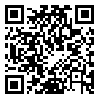Volume 9, Issue 4 (2020)
JCP 2020, 9(4): 563-576 |
Back to browse issues page
1- Department of Plant Protection, Faculty of Agriculture, Urmia University, Urmia, Iran.
2- Department of Plant Protection, Faculty of Agriculture, Urmia University, Urmia, Iran. , a.safavi@urmia.ac.ir
3- Department of Plant Protection, College of Agriculture and Natural Resources, University of Tehran, Karaj, Iran.
2- Department of Plant Protection, Faculty of Agriculture, Urmia University, Urmia, Iran. , a.safavi@urmia.ac.ir
3- Department of Plant Protection, College of Agriculture and Natural Resources, University of Tehran, Karaj, Iran.
Abstract: (1771 Views)
In the present study, the cuticle-degrading enzymes production potential of five native Beauveria bassiana (TV, OZ, UN, DV and DE) isolates was investigated in the presence of cuticles from Eurygaster integriceps, Ephestia kuehniella and Zophobas morio. Furthermore, histopathology of infected insects by B. bassiana was studied. The level of cuticle degrading enzymes was the highest and lowest for TV (as the most virulent isolate) and DE (as the weakest isolate), respectively. E. integriceps nymphs as the most sensitive host produced the highest level of cuticle degrading enzymes (Pr2, exochitinase, and lipase) while Z. morio as the most resistant host, produced the lowest level of hydrolytic enzymes. According to histopathological study, the fungal isolate could not penetrate into Z. morio cuticle, as no mycelia or hyphae were observed in its tissues after inoculation, while fungal bodies were detected in microscopic slides of the other two insects. Overall, the chemical and topographical structure of insect cuticle had a substantial effect on the virulence of entomopathogenic fungus. Production of enzymes including proteases (especially Pr2), chitinase (N-acetyl-glucosaminidase), and lipases was positively related to virulence of fungus isolates. It can be concluded that not only the hydrolytic activity of B. bassiana isolates, but also host cuticle composition determine the pathogenesis and virulence cascade in fungus-insect interactions.
Article Type: Original Research |
Subject:
Insect Pathology
Received: 2020/01/26 | Accepted: 2020/07/7 | Published: 2020/08/4
Received: 2020/01/26 | Accepted: 2020/07/7 | Published: 2020/08/4
| Rights and permissions | |
 |
This work is licensed under a Creative Commons Attribution-NonCommercial 4.0 International License. |




